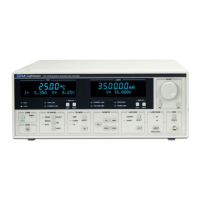December 2019 34 LDC-3706 Series Laser Controller
RTD SENSORS – When an RTD sensor is selected, the LDC-3706 measures temperature
based on the resistance of the sensor. An example of an RTD sensor is the Xian Diamond USA
T2001SDL. This device has a positive slope and a nominal resistance at 0°C of 100 ohms. Two
wire RTDs should be connected across the Sensor+ and Sensor- pins (pins 7 and 8).
The resistance versus temperature function for typical platinum RTDs is accurately modeled by
the Callendar-Van Dusen equation, as shown below.
1
100
−
For T 0°C
1
For T > 0°C
where:
Ω
0
Ω
°
°
The IEC 60751 Callendar-Van Dusen constants are listed below and are used as default values
in the LDC-3706 Laser Diode Controller.
3.908 ∗10
−5.775 ∗10
−4.183 ∗10
For optimal accuracy and stability, the 1 mA current source should be selected for RTD sensors
with resistance of 200 to 1500 and the 2.5 mA range should be used with resistance of 1
to 200 . In general, the change in resistance per change in temperature is much lower for a
typical 100 RTD than that of a typical 10 k thermistor. The proportional and integral terms
for the PID loop must be increased appropriately when using an RTD sensor for optimal setting
time and stability.

